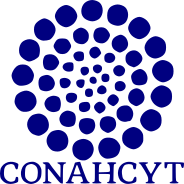A palynological analysis was performed on the sedimentary cover of Laguna Cea, located in the subbasin of the Simpson River in the Coyhaique region of southern Chile. The pollen record shows a landscape evolution from a woodland-type ecosystem covered by
Abstract
A melissopalynological analysis of Apis
mellifera L. honeys from two municipalities
in the State of Zacatecas, Mexico, is presented.
The pollen content was determined, and
the different elements were quantified.
Honeys from the Municipality of Guadalupe
presented 12 and 14 pollen types. The
2006 Guadalupe sample was monofloral;
it presented a dominant component of
Asteraceae pollen (61%) and a secondary
component of Brassica spp. pollen (28.5%),
Fabaceae reaching only 6.5% and thus
being of minor importance. The floristic
180
Núm. 32: 179-191 Agosto 2011
composition of the 2007 Guadalupe sample
was similar in the three principal pollen
types although the Asteraceae did not attain
the 45% needed to be considered monofloral
(Asteraceae 44.1% and Brassica 36.3% were
classified as secondary pollen, Fabaceae
11.7% and Stenandrium 5.2% as of minor
importance). Honey from the Municipality of
Villanueva presented more diversity, having
18 pollen types. This honey was multifloral;
Asteraceae (31.3%), Heliocarpus sp. (18.8%),
and Ulmaceae (17.1%) were considered
secondary pollen, whereas Fabaceae (9.9%)
and Sapindaceae (9.0%) were classified as
pollen of minor importance. Pollen from
herbs and shrubs was predominant in the
Guadalupe honey samples, and shrubs
dominated insignificantly over trees in
the Villanueva sample. In accord with the
analysis, Guadalupe honeys (3734 y 4226
pollen grains/gr of honey) were classified in
Group II and that of Villanueva (1508 pollen
grains/gr of honey) in Group I. The families
Asteraceae, Fabaceae (Lonchocarpus sp.,
Mimosa spp.), Ulmaceae, Sapindaceae,
and Lamiaceae and the genera Brassica,
Heliocarpus, and Stenandrium are all
considered important apicultural resources.
Downloads
Published
Issue
Section
License

Polibotánica by Departamento de Botánica de la Escuela Nacional de Ciencias Biológicas del Instituto Politécnico Nacional se distribuye bajo una Licencia Creative Commons Atribución-NoComercial-CompartirIgual 4.0 Internacional.




















